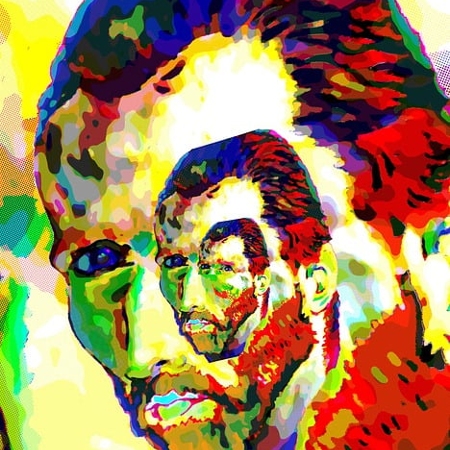
The Visionary Experience, how is it even possible to describe such an ineffable experience? An altered state of consciousness: profound perceptual shifts, heightened awareness, a journey into the depths of the mind…
The Visionary Experience can occur:
Many of the world’s great religions and spiritual traditions have incorporated the visionary experiences into their rituals and beliefs.
Visionary experiences have inspired artists, musicians, writers and philosophers etc. throughout history…
Symbolism and metaphor are essential for artists seeking to convey the ineffable qualities of their visionary experiences. Through this symbolism, complex ideas and emotions can be shared in a concise and evocative manner.
Visionary Experience in Artwork
From the ancient cave paintings, to Mandalas to contemporary psychedelic art.
Indus Valley Civilization (3300–1300 BCE): The presence of certain symbols found on seals. It’s quite likely that the creators of these seals were influenced by altered states of consciousness. ASCs created induced by meditation, yoga or the use of entheogenic substances… creating a visionary state.
Predynastic Egyptian (4300–3000 BCE): The murals and paintings found in the tombs often depict scenes featuring fantastic creatures, surreal landscapes and otherworldly beings. These images, inspired by visionary experiences… Appearing along with images of the Blue Lotus flower and other ritual depictions, during the Dynastic period (3100–323 BCE).
Mayan and Aztec art is filled with symbolic meanings… depicting deities and mythological creatures. The intricate iconography of The Aztec calendar stone is another example of the complex symbolism and cosmic knowledge possibly inspired by the visionary experience.
Visionary Experiences in Literature
In William Blake‘s “Songs of Innocence and Experience” his poetry delves into mystical and prophetic visions… exploring themes of good and evil, innocence and experience.
Aldous Huxley‘s “The Doors of Perception“ is a non-fiction work where Huxley explores his experiences with plant medicines, offering insights into altered states of consciousness and the nature of reality.
Herman Hesse‘s “Siddhartha” is a novel following the spiritual journey of Siddhartha… seeking enlightenment through various experiences.
and Visionary Experiences in Music…

Psychedelic Rock bands (Pink Floyd, The Beatles, and Jimi Hendrix) created groundbreaking music reflecting the psychedelic culture of the 1960s and 1970s. They were both inspired by, and inspiring others experience.
Electronic Music genres like Psytrance and Ambient music also aim to evoke feelings of altered states of consciousness using repetitive rhythms and ethereal soundscapes.
The Visionary Experience has produced: Spiritual Teachings, Music, Written works, Films, Plays, Stories, scientific discoveries…
“Where would we be without it?“
Characteristics of Visionary Experience:
- Perceptual Shifts: A fundamental aspect of visionary experience is the transformation of sensory perception. Visual, auditory and tactile senses become heightened… leading to vivid hallucinations, altered perceptions of time and space and synaesthesia (the blending of senses). Colours may appear more vibrant, sounds more intricate, and textures more pronounced.
- Emotional Intensity: Visionary experiences can evoke a wide range of intense emotions… from euphoria and bliss to fear and awe. These emotions are often accompanied by profound insights and spiritual revelations. The intensity of these emotional experiences can be overwhelming… yet also deeply transformative.
- Cognitive Expansion: The mind expands it’s capacity for abstract thought… leading to novel ideas, creative breakthroughs and a deeper understanding of the Universe. Logical thinking may give way to intuitive and imaginative thought processes, allowing for a more holistic and interconnected perspective.
- Transcendence of Ego: The sense of self can dissolve, leading to a feeling of oneness with the cosmos… Resulting in profound senses of interconnectedness and compassion, as the individual ego gives way to a broader sense of identity.
- Spiritual Awakening: Many people report profound spiritual experiences during visionary states, often leading to a transformation of their worldview and values, as well as a deeper connection to the divine.
Methods of Creating Visionary Experiences
There are over 100 posts all about it on this blog.
Go explore 🙂

